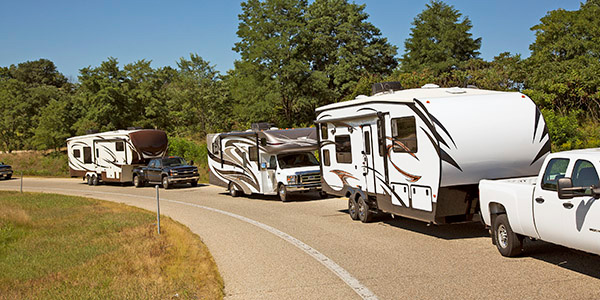
Exposure Excellence: Leveraging Data to Boost RV Sales This Season
Many dealers are currently overstocked with new, non-current models or used units and need to make room for fresh inventory. Sound like you? Or maybe you have the latest models, but want to attract more buyers. No matter which category your dealership falls into, this article offers some tips and strategies to help.
Harness Consumer Demand Data to Elevate Your Inventory’s Exposure
Understanding what consumers are in the market for and aligning your inventory advertising to that demand is essential to increasing engagement and sales opportunities. At RVT, we conduct comprehensive data analysis of RV shoppers searching on our marketplace to provide you with valuable consumer search information that can help guide your advertising decisions. For instance:
The most-searched RV classes in the 2023 season on RVT.com were:
- Class A
- Travel Trailer
- Class C
In 2023, over one-third of our shoppers searched for Class A motorhomes, followed by 24% interested in travel trailers. Class C is next with 15% of the searches. Fifth Wheels, Toy Haulers, Pop-Ups, and other classes make up the remaining 26% of searches.
The top-searched brands on RVT in the 2023 season were:
- Newmar
- Winnebago
- Tiffin
- Prevost
- Airstream
Understanding these trends can help you to prioritize which inventory to support with enhanced advertising to capture more views of your matching inventory. RVT’s suite of enhancements such as featured listings, dynamic remarketing, display advertising, and placing your units in our auto-notify emails will boost your visibility, targeting precisely the consumers who are searching for particular brands and in specific geographic areas.
Even if your dealership doesn’t sell the brands or classes that are generating higher levels of interest on RVT, hyper-targeted advertising such as targeted social remarketing, dynamic remarketing, and dynamic super leaderboard ads can be extremely effective at introducing different units into that market of consumer searches and increase your dealership’s chances of gaining market share.
Understand Your Dealership’s Competitive Position
Identifying your competitors and gathering information about them, such as their operating area, products, pricing, and promotional tactics will help you identify your dealership’s strengths and weaknesses.
Consider:
- Their geographic reach in comparison to yours.
- The types and brands of RVs they carry, as well as the products and services they offer. How do you compare?
- The marketing tactics they employ to engage with RV shoppers. Are yours similar?
- Their social media presence. Which strategies are they employing to engage their audience? How do yours compare?
- Their pricing structure. Keep an eye on their listings and advertising on RVT to help you get a feel for their inventory and pricing.
- Their target market. Is it exactly the same? What are their differentiators? What are your advantages?
- The size of their organization. How many staff? How many units?
- Their professional reputation. Take a look at consumer reviews on their website, social media, and Google and compare them to your own.
Performing a regular competitive analysis and harnessing the power of consumer data puts your dealership in a strong competitive position, helping you increase leads and ultimately, your sales.
Ready to set your dealership up for optimal exposure and views via the RVT marketplace?
Contact us today to request personalized, one-on-one consultation rvt.com/consult







